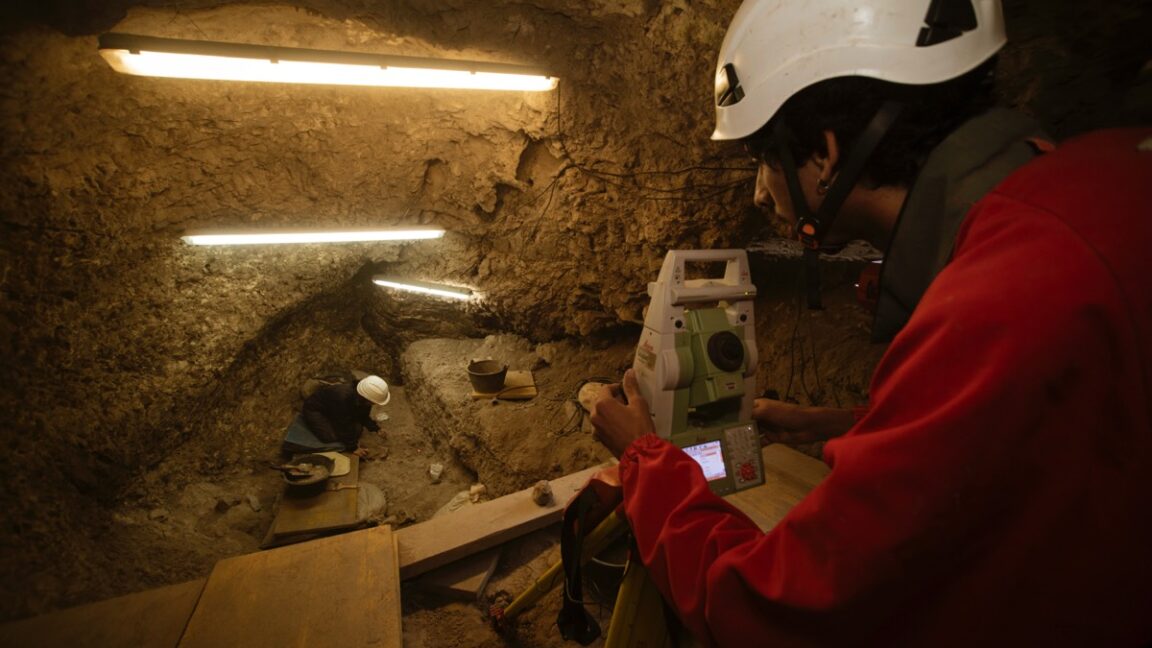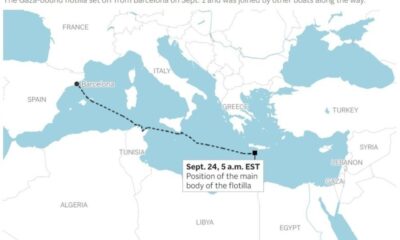Science
Archaeologists Uncover Evidence of Cannibalism in Ancient Spain

Archaeologists have revealed that human remains discovered in El Mirador Cave, located in the Sierra de Atapuerca region of northern Spain, indicate evidence of cannibalism dating back approximately 5,700 years. A study published in the journal Scientific Reports suggests that these acts likely stemmed from a violent confrontation between rival Late Neolithic herding communities.
The remains of 11 individuals were examined, with researchers noting that interpreting cannibalism poses significant challenges. Co-author Palmira Saladié, affiliated with IPHES-CERCA and the Universitat Rovira i Virgili (URV), explained the complexities involved, stating, “Cannibalism is one of the most complex behaviors to interpret due to the inherent difficulty of understanding the act of humans consuming other humans.”
Historical Context and Evidence
The El Mirador Cave findings are not isolated, as earlier evidence of cannibalism has been reported at the nearby Atapuerca site. This includes the remains of six individuals from the Early Bronze Age, with skull caps that may have been used in ceremonial practices. Since 1994, over 160 bone fragments have been excavated from the Gran Dolina cavern at Sierra de Atapuerca, with more than 30 percent exhibiting signs of butchering and consumption.
In their recent analysis, researchers scrutinized 5,056 human remains from two sectors of El Mirador Cave using microscopy. They selected eight samples for radiocarbon dating, confirming the time frame to be between 5,700 and 5,570 years ago. The study also involved strontium isotope testing on additional bones, revealing that the individuals were likely local and consumed within a short time frame.
The microscopy revealed distinct slice marks, scrape marks, and chop marks, alongside evidence of cremation and human tooth marks. This suggests that the victims were skinned, disarticulated, and subsequently cooked and eaten.
Implications of Cannibalism
Determining the motivation behind these acts remains complex. The authors of the study considered alternative explanations, including funerary rituals that could leave similar marks on bones. They noted, however, that such practices typically affect only a small percentage of remains. In contrast, the evidence found in El Mirador Cave aligns more closely with butchery aimed at extracting meat, viscera, and even brain matter.
Co-author Francesc Marginedas emphasized that this was neither a result of extreme famine nor a funerary tradition. “The evidence points to a violent episode, given how quickly it all took place—possibly the result of conflict between neighboring farming communities,” he stated.
Unlike previous cannibalism cases linked to desperate survival situations, the analysis indicated no environmental factors that would create conditions for severe food scarcity. Potential short-term events, such as crop failures or disease outbreaks, might have occurred, but these would not leave lasting evidence in the archaeological record.
The remains examined in this study span a broad age range, suggesting that the incident was not a targeted response to famine, which typically affects more vulnerable populations.
Co-author Antonio Rodríguez-Hidalgo remarked on the broader implications of the findings, stating, “Conflict and the development of strategies to manage and prevent it are part of human nature.” He highlighted that even in less stratified societies, violent episodes and acts of cannibalism can occur, particularly in contexts of conflict.
The research underscores the significance of understanding ancient human behaviors within their historical contexts, shedding light on complex social dynamics in prehistoric communities.
-

 World3 months ago
World3 months agoScientists Unearth Ancient Antarctic Ice to Unlock Climate Secrets
-

 Entertainment3 months ago
Entertainment3 months agoTrump and McCormick to Announce $70 Billion Energy Investments
-

 Lifestyle3 months ago
Lifestyle3 months agoTransLink Launches Food Truck Program to Boost Revenue in Vancouver
-

 Science3 months ago
Science3 months agoFour Astronauts Return to Earth After International Space Station Mission
-

 Technology2 months ago
Technology2 months agoApple Notes Enhances Functionality with Markdown Support in macOS 26
-

 Top Stories1 week ago
Top Stories1 week agoUrgent Update: Fatal Crash on Highway 99 Claims Life of Pitt Meadows Man
-

 Sports3 months ago
Sports3 months agoSearch Underway for Missing Hunter Amid Hokkaido Bear Emergency
-

 Politics3 months ago
Politics3 months agoUkrainian Tennis Star Elina Svitolina Faces Death Threats Online
-

 Technology3 months ago
Technology3 months agoFrosthaven Launches Early Access on July 31, 2025
-

 Politics3 months ago
Politics3 months agoCarney Engages First Nations Leaders at Development Law Summit
-

 Entertainment3 months ago
Entertainment3 months agoCalgary Theatre Troupe Revives Magic at Winnipeg Fringe Festival
-

 Politics1 week ago
Politics1 week agoShutdown Reflects Democratic Struggles Amid Economic Concerns





















